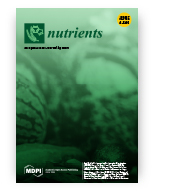Effect of Heat-Treated Garlic (Allium sativum L.) on Growth Parameters, Plasma Lipid Profile and Histological Changes in the Ileum of Atherogenic Rats
Katarzyna Najman, Anna Sadowska, Krzysztof Buczak, Hanna Leontowicz, Maria Leontowicz
Nutrients
Ministerial score = 140.0
JIF Impact Factor (2020) = 5.719(Q1)
 Dietary supplementation with raw garlic has a preventive and healing effect in cardiovascular diseases, but it could also damage the intestinal mucosa, resulting in impairment of nutrient absorption. Garlic processing, including heat treatment, changes the content and biological activity of garlic, so it is crucial to find food-processing methods that will preserve the health-promoting properties of garlic while minimizing its negative impact on the digestive system. Therefore, in this study, the effect of garlic (Allium sativum L.) on growth parameters, plasma lipid profile, and morphological parameters in the ileum of Wistar rats subjected to various types of heat treatment (90 s blanching garlic, 10 min boiling in water, 10 min pan frying without fat, microwave heating fresh garlic, 90 s blanching and microwave heating garlic, 10 min boiling in water and microwave heating garlic, and 10 min pan frying without fat and microwave heating garlic) was determined in an atherogenic diet (containing 1% addition of cholesterol). In the conducted research, it was found that the diet supplemented with heat-treated garlic used in the atherogenic diet improved the consumption and growth parameters of rats, depending on the type and time of its use. The highest consumption was recorded in atherogenic groups supplemented with garlic subjected to a longer (10 min) heat treatment and was then heated in a microwave oven. Garlic subjected to the shortest heat treatment proved to be most effective, and a significant improvement in the lipid profiles of rats’ plasma with atherogenic was observed. Extending the time of heat treatment of garlic and, additionally, its microwaving significantly weakened the action of garlic in the body, but still retained its hypolipidemic effect. The greatest influence on the structural changes in the mucosa of the rats’ iliac intestine, manifested by degeneration of the mucosa, shortening the length of the intestinal villi, damage to the brush border, and thus impairment of the intestinal absorption, was exerted by supplementing the atherogenic diet with garlic subjected to short-term heat treatment. Among the processes used, blanching was the least favorable, and the long-lasting thermal processes (cooking, frying for 10 min) had a positive effect on the mucosa of the rats’ intestines. The results obtained in this study confirm that the selection of an appropriate method of thermal processing of garlic may allow for the maintenance of preventive and therapeutic efficacy of garlic in cardiovascular diseases, while ensuring the safety of its long-term use in the context of degenerative changes in the gastrointestinal tract.
Dietary supplementation with raw garlic has a preventive and healing effect in cardiovascular diseases, but it could also damage the intestinal mucosa, resulting in impairment of nutrient absorption. Garlic processing, including heat treatment, changes the content and biological activity of garlic, so it is crucial to find food-processing methods that will preserve the health-promoting properties of garlic while minimizing its negative impact on the digestive system. Therefore, in this study, the effect of garlic (Allium sativum L.) on growth parameters, plasma lipid profile, and morphological parameters in the ileum of Wistar rats subjected to various types of heat treatment (90 s blanching garlic, 10 min boiling in water, 10 min pan frying without fat, microwave heating fresh garlic, 90 s blanching and microwave heating garlic, 10 min boiling in water and microwave heating garlic, and 10 min pan frying without fat and microwave heating garlic) was determined in an atherogenic diet (containing 1% addition of cholesterol). In the conducted research, it was found that the diet supplemented with heat-treated garlic used in the atherogenic diet improved the consumption and growth parameters of rats, depending on the type and time of its use. The highest consumption was recorded in atherogenic groups supplemented with garlic subjected to a longer (10 min) heat treatment and was then heated in a microwave oven. Garlic subjected to the shortest heat treatment proved to be most effective, and a significant improvement in the lipid profiles of rats’ plasma with atherogenic was observed. Extending the time of heat treatment of garlic and, additionally, its microwaving significantly weakened the action of garlic in the body, but still retained its hypolipidemic effect. The greatest influence on the structural changes in the mucosa of the rats’ iliac intestine, manifested by degeneration of the mucosa, shortening the length of the intestinal villi, damage to the brush border, and thus impairment of the intestinal absorption, was exerted by supplementing the atherogenic diet with garlic subjected to short-term heat treatment. Among the processes used, blanching was the least favorable, and the long-lasting thermal processes (cooking, frying for 10 min) had a positive effect on the mucosa of the rats’ intestines. The results obtained in this study confirm that the selection of an appropriate method of thermal processing of garlic may allow for the maintenance of preventive and therapeutic efficacy of garlic in cardiovascular diseases, while ensuring the safety of its long-term use in the context of degenerative changes in the gastrointestinal tract.
DOI:10.3390/nu14020336









